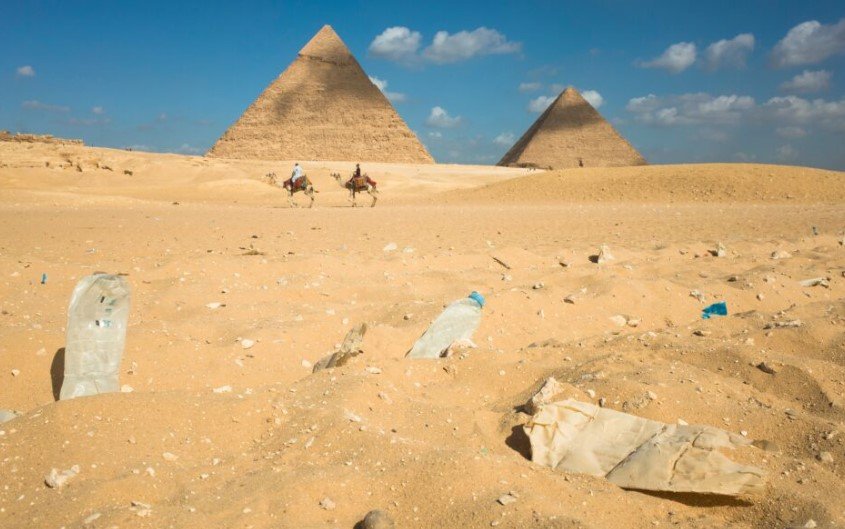Egypt is pushing ahead with a sweeping overhaul of its waste management sector, aiming to nearly double its recycling rate within three years — a target seen as both bold and urgently needed.
From 10% to 60% — A Dramatic Shift in Less Than a Decade
Back in 2018, Egypt’s municipal solid waste recycling stood at a meagre 10%. By 2024, it had climbed to 37%, thanks in part to the country’s Waste Management Law (No. 202/2020). Former Environment Minister Yasmine Fouad, speaking on June 18, confirmed that the goal now is 60% by 2027.
The law has done more than tighten regulations — it’s opened doors for private capital. From just two private recycling contracts in 2018, Egypt now counts 36 agreements spanning waste collection, transport, treatment, and recycling. Many cover multiple governorates at once, signaling a coordinated national push.
Technology at the Heart of New Waste-to-Energy Projects
Among the most eye-catching developments are waste-to-energy ventures. At the Al-Salam and Hammam landfills, USD 40 million worth of projects are converting landfill gas into electricity. The aim is twofold: cut harmful emissions and turn a disposal liability into a resource.
In Cairo, the Abu Rawash wastewater treatment plant — the country’s second largest — is treating 1.6 million cubic meters of wastewater daily. The focus isn’t just cleaning the water, but reusing the resulting sludge for agriculture and industry.

And then there’s the ambitious joint project between Emirati firm Zero Carbon Ventures and Egypt’s Green Planet: the Zero Carbon Green Planet (ZCGP) plant at the 15 May landfill. Once fully operational in 2027, it’s expected to process 400 tonnes of organic waste daily into graphene, hydrogen, and fertilizer.
Assiut’s New Recycling Plant Brings European Tech to Upper Egypt
In Assiut, a EGP 250 million recycling plant equipped with German-Dutch processing lines is under construction. Designed to handle 60 tonnes of waste per hour, it’s expected to be fully operational by 2026.
Local officials say it’s not just about waste diversion. These projects mean jobs — 250 positions are already tied to ZCGP, with more anticipated across logistics, plant operations, and recycling services.
A Table of Key Waste Reform Projects
| Project | Location | Focus | Capacity | Completion Target | Investment |
|---|---|---|---|---|---|
| Al-Salam & Hammam Landfill Gas | Multiple | Landfill gas to energy | N/A | Ongoing | USD 40m |
| Abu Rawash WWTP | Cairo | Wastewater treatment & sludge reuse | 1.6m m³/day | Operational | N/A |
| ZCGP Waste-to-Energy Plant | Cairo (15 May) | Graphene, hydrogen, fertilizer from organic waste | 400 t/day | 2027 | N/A |
| Assiut Recycling Plant | Assiut | Mechanical waste sorting & recycling | 60 t/hour | 2026 | EGP 250m |
Informal Sector Still Dominates Collection
For all the progress, much of Egypt’s recycling still happens through informal networks, where waste pickers collect materials with resale value. Large portions of municipal waste are dumped or burned in the open, some ending up in waterways or public spaces.
The National Solid Waste Management Program (NSWMP) is trying to change that by bringing informal workers into formal roles, supporting NGOs, and building local recycling hubs.
Circular Economy Goals Meet Ground Realities
Egypt’s push fits into a broader circular economy agenda — securing feedstock for organic fertilizers, boosting clean energy production, and cutting landfill use. Yet, the gap between the 37% recycling rate today and the 60% goal by 2027 will test whether infrastructure, funding, and enforcement can keep pace.
Officials say the target is achievable if current momentum holds. But environmental advocates caution that without stronger public awareness and tougher crackdowns on illegal dumping, progress could stall.
For now, the mix of large-scale industrial plants, new legislation, and growing private sector interest suggests Egypt is serious about turning waste into a resource rather than a problem.
